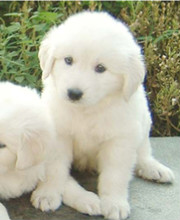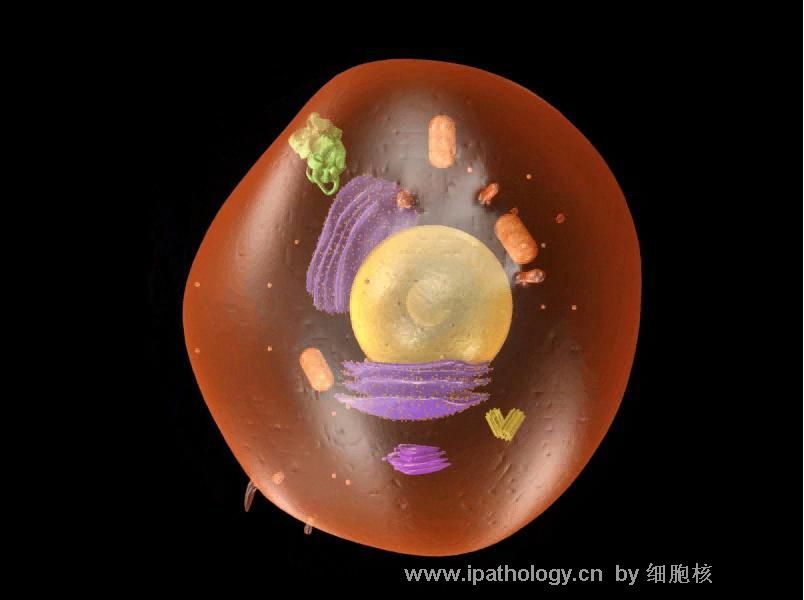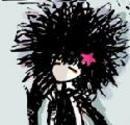| 图片: | |
|---|---|
| 名称: | |
| 描述: | |
- B219右侧附件肿瘤
-
zhongshihua 离线
- 帖子:1608
- 粉蓝豆:0
- 经验:1651
- 注册时间:2006-09-11
- 加关注 | 发消息
| 姓名: | *** | 性别: | 表型女性 | 年龄: | 18 |
| 标本名称: | 右侧附件 | ||||
| 简要病史: | 妇科检查见两性外生殖器。术中见幼稚性子宫,右侧附件肿大。左侧为正常卵巢组织。 | ||||
| 肉眼检查: | 5.0*4.0*3.5厘米灰白色肿物一个,表面光滑。切面灰白色,质韧并有砂砾感。另有阴茎样组织一段。 | ||||
标签:卵巢 性腺母细胞瘤 生殖细胞瘤
-
本帖最后由 于 2007-08-15 22:39:00 编辑

- 宠辱不惊,闲看庭前花开花落; 去留无意,漫随天外云卷云舒!
相关帖子
×参考诊断
卵巢性腺母细胞瘤伴恶性生殖细胞瘤
-
If I am not mistaken, this beautifully illustrated case is a rare gonadoblastoma with possible overgrowing dysgerminoma. The clinical history is typical. Accoring to the Fifth Edition of "Haines and Taylor Obstetric and Gynecological Pathology", 80% of gonadoblastomas occur in phenotypic females and the remaining 20% occur in phenotypic male pseudohermaphrodites with cryptorchidism, hypospadias, ambiguous external genitalia and female internal secondary sex organs. Clinical presentations include amenorrhea, virilization, and abdominal distension. Grossly, pure gonadoblastomas are smaller, oval, somewhat lobulated, and vary from soft and fleshy to hard and fibrotic (many calcified). When overgrown by co-existing dysgerminoma or other types of germ cell tumor, the much larger tumor appear fleshy, hemorrhagic and even focally cystic. Microscopically, pure gonadoblastomas show cellular nests between fibrotic or cellular stroma. The cellular nests are variable in size and contain large germ cells (similar to dysgerminoma cells) admixed with sex-cord derivatives resembling immature Sertoli and granulosa cells. The former have large vesicular nuclei and often vacuolated cytoplasm, while the latter have smaller, oval to slightly elongated hyperchromatic nuclei. The Sertoli or granulosa cells may line the periphery of cellular nests, surround individual or small collections of germ cells, or surround Call-Exner-like bodies. The stroma may contain interstitial cells (Leydig cells or ovarian hilus cells) with or without luteinization.

聞道有先後,術業有專攻
-
zhongshihua 离线
- 帖子:1608
- 粉蓝豆:0
- 经验:1651
- 注册时间:2006-09-11
- 加关注 | 发消息
-
这是一例少见的性腺母细胞瘤伴恶性生殖细胞瘤。
其主要的特点如下:
1. 肿瘤主要由大和小2型细胞组成,瘤细胞聚成分散的细胞巢,偶见弥漫分布。
2. 细胞巢由大的生殖细胞和较小的性索型上皮细胞组成。
3. 其生殖细胞类似无性细胞瘤或精原细胞瘤中的生殖细胞;其次为类似睾丸中不成熟生殖细胞的细胞。
4. 较小的细胞呈圆或卵圆形,核较淡染,类似不成熟的支持细胞或粒层细胞。
5. 性索型细胞围绕环状空隙,空隙中充满伊红染基底膜样物质,环状空隙多位于中央含生殖细胞的细胞巢的周边部分。
6. 瘤细胞巢之间有多少不等的纤维间质,其间有睾丸型间质细胞或黄素化细胞。
7. 可见散在圆形或斑点状的钙化灶。
8. 肿瘤中有大量的恶性生殖细胞肿瘤的过度生长而形成生殖细胞瘤(精原细胞瘤)。
根据病理所见及临床提供的资料,本例是性分化异常的病例,应该为真两性畸形。

- 宠辱不惊,闲看庭前花开花落; 去留无意,漫随天外云卷云舒!
-
contain large germ cells (similar to dysgerminoma cells) admixed with sex-cord derivatives resembling immature Sertoli and granulosa cells. The former have large vesicular nuclei and often vacuolated cytoplasm, while the latter have smaller, oval to slightly elongated hyperchromatic nuclei
其生殖细胞类似无性细胞瘤或精原细胞瘤中的生殖细胞;其次为类似睾丸中不成熟生殖细胞的细胞。
较小的细胞呈圆或卵圆形,核较淡染,类似不成熟的支持细胞或粒层细胞。
??????
-
zhongshihua 离线
- 帖子:1608
- 粉蓝豆:0
- 经验:1651
- 注册时间:2006-09-11
- 加关注 | 发消息








































